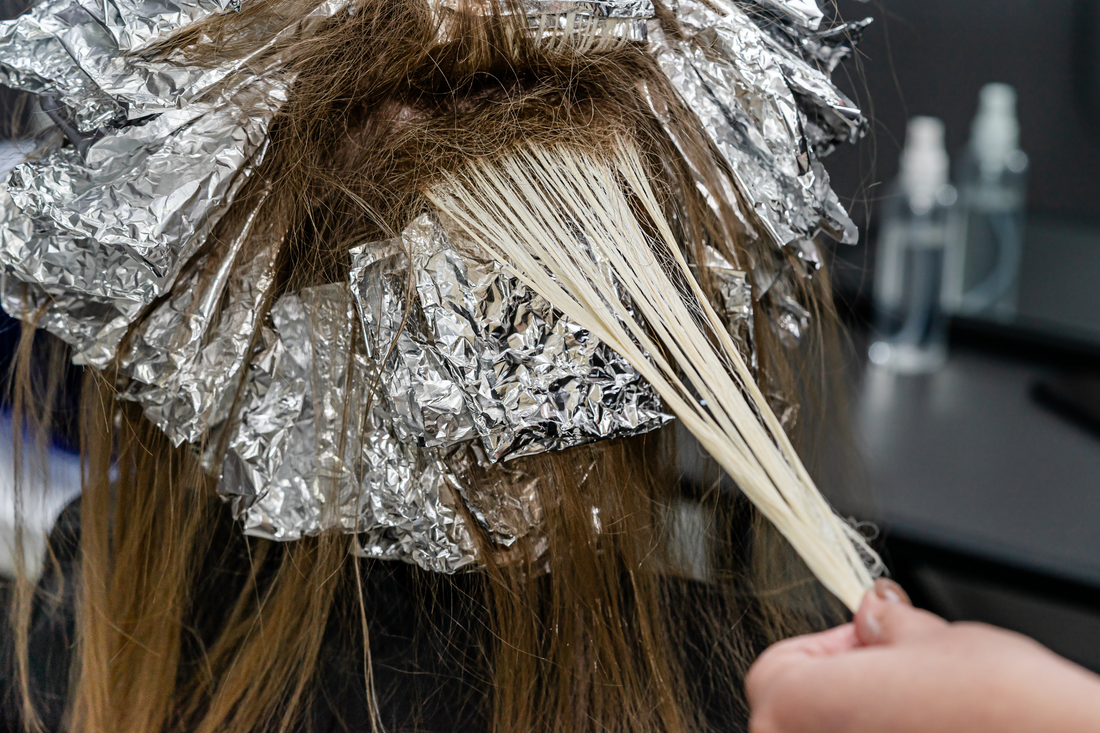If you are wondering if it is possible, or even rather if it's better, to bleach damp or dry hair, then you’ve come to the right place. Can you put bleach on wet hair? The simple answer is yes, but is bleaching damp hair the best method for your hair? We’ve gathered the facts for you.
The Difference Between Bleaching Dry vs Wet Hair
Dying on wet hair, in general, will prevent the dye from sticking as well as it does on dry hair. If you are looking for maximum dye absorption and vibrancy, we do not recommend bleaching damp hair. Dying dry hair will allow the dye to effectively soak in better.
In some instances, the technique might actually call for wet bleaching, but this is all circumstantial depending on what end product you are looking for.
Bleaching Damp Hair
As we’ve mentioned above, bleaching on damp hair will lead to a different outcome than bleaching on dry hair. Some of the results of bleaching on wet hair includes:
- Subtle Lightening and Transitioning: Having wet hair will dilute the bleach with water, thus making it less potent and effective on your hair. If you are looking for a more muted color in general, this may be the option to go with.
- Faster Application - Bleach is able to process more quickly into wet hair because your hair structure is changed (the cuticle is open) when it is wet. This is due to the fact that hair proteins form weaker bonds when wet.
Bleaching Dry Hair
As opposed to being diluted in wet hair, bleach has its full impact when applied to dry hair. When applying bleach to dry hair, the bleach penetrates the cuticle. This way, the bleach is able to enter the cortex of your hair and decompose the melanin pigments (what gives your hair dark colors) in your hair. Reducing the melanin pigment in your hair, will of course result in a lighter color. While the process of dying dry hair can take longer than bleaching damp hair, the result can be stronger.
Preparing to Dye Your Hair
Regardless of whether you are trying to bleach wet or dry hair, both processes entail the same preparation method. It is best to not wash your hair right before a hair dying process. This is due to the fact that the natural oils in your hair actually help to protect your scalp. These natural sebums aid in minimizing scalp irritation from the chemicals in dyes. Conditioning immediately before you dye your hair can also prevent the dye from fully absorbing into your cuticle as well, as it can act as a barrier around your hair strand. In the weeks before though, you can deep condition your hair as it will help to pre-hydrate your hair and reduce the risk of breakage after dying your hair.
After-Care for Dyed Hair
It is inevitable that your hair will be affected in terms of overall health after going through a taxing process such as bleaching. However, the ways in which you care for your hair afterwards will make a great difference and help get your hair back to better health:
- Space out and limit your bleaching sessions: Continuous bleaching in over a short period of time can be detrimental to your hair health and can even potentially cause breakage
- Avoid chlorinated pools: The chlorine in swimming pools can not only change the color of your dyed hair but also increase the potential for hair damage (maybe choose a day at the beach instead)
- Opt out of heat treatments: Your hair will most likely be at its most dry and brittle after bleaching and using styling tools with heat can further damage bleached hair, possibly even burning your scalp
- Excess sun exposure is risky: If you live in a naturally sunny area, it may be hard to avoid the sun completely, but we recommend limiting your time directly under sunlight after a bleaching process. Try wearing a hat to protect your mane.
To Bleach or Not to Bleach Wet/Damp Hair
While you can bleach your hair while it is still damp, it may not achieve the desired look you are going for. If you are not careful, it may also comes with potential damage to your hair. We recommend seeing a qualified hair professional if you are looking to bleach your hair (damp or dry), especially if you are new to the hair dying process. A professional will be able to expertly determine how to get your hair to its absolute best—as safely as possible.
Looking to optimize your hair health after bleaching it? Revela’s ultra-lightweight formula harnesses the power of our new, patent-pending ingredient ProCelinyl™ to help improve the appearance of thinning hair and support thicker, fuller looking hair by efficiently penetrating the scalp and stimulating hair follicles! Check out our customer stories and the scientific research behind this breakthrough formulation.





